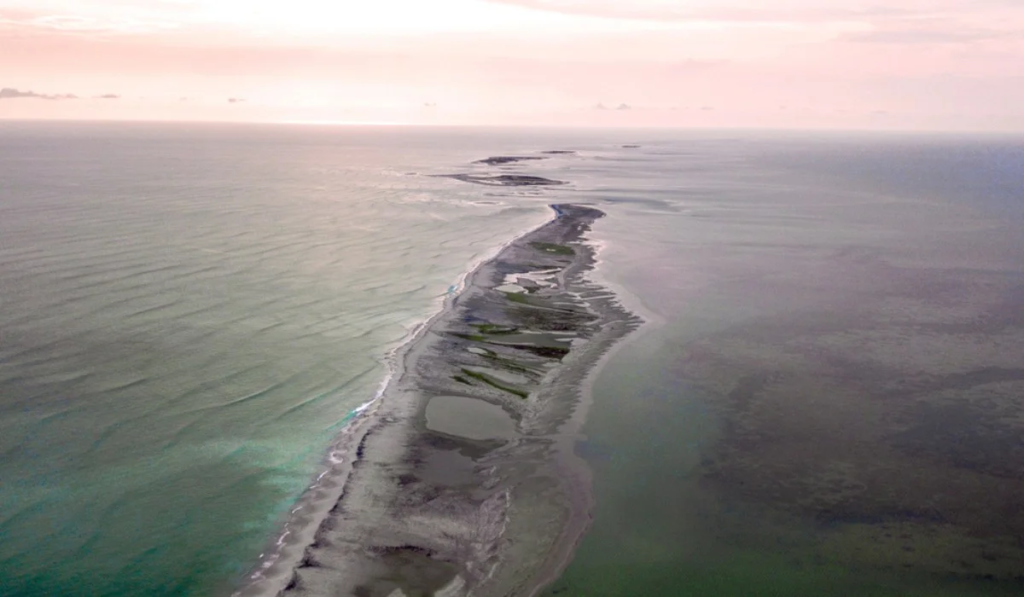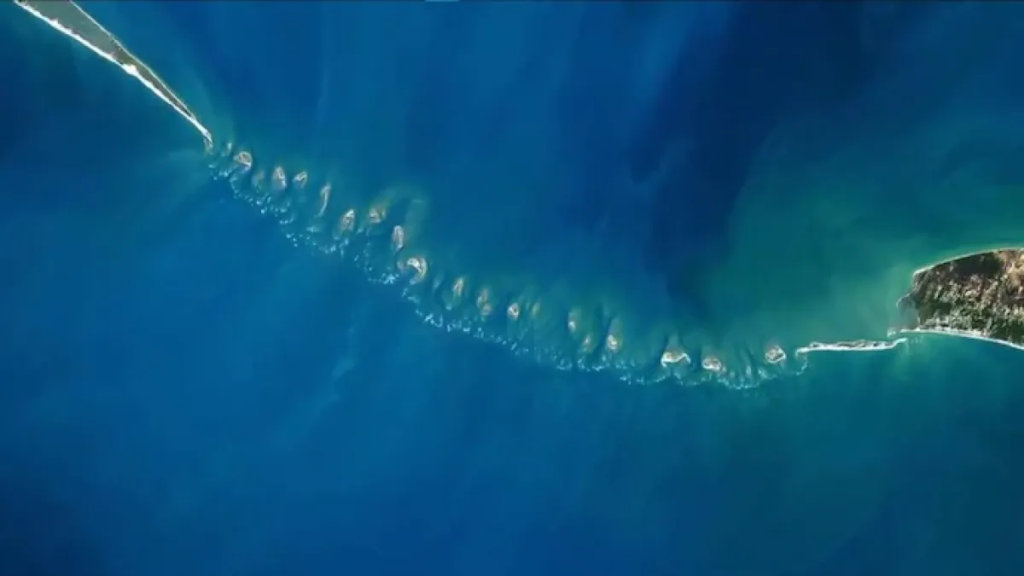The Ram Setu, also known as Adam’s Bridge, is a chain of limestone shoals stretching across the Palk Strait between India and Sri Lanka. Its age, origins, and purpose have been shrouded in mystery and legend for centuries, sparking debate and captivating imaginations.
Mythological Origins:

Hindu mythology paints a vivid picture of the Ram Setu’s creation. Lord Rama, an avatar of Vishnu, is said to have built the bridge with the help of his Vanara army, including the mighty Hanuman, to rescue his wife Sita from the clutches of the demon king Ravana in Lanka. The Ramayana, an ancient Indian epic, describes the bridge as a marvel of engineering, constructed from floating stones inscribed with Rama’s name.
Scientific Theories:

While the Ramayana’s account holds immense cultural significance, scientific explanations attempt to demystify the Ram Setu’s formation. Geological studies suggest that the chain of shoals is a natural formation, likely arising from the movement of tectonic plates and the accumulation of sand and coral over millions of years. Some theories propose that the shoals were once part of a land bridge that connected India and Sri Lanka, subsequently submerged by rising sea levels.
Archaeological Investigations:
Archaeological investigations have further fueled the debate. Underwater explorations have revealed man-made structures, including stone pillars and steps, within the shoals. These findings have led some to believe that the Ram Setu may have indeed been a constructed bridge, possibly dating back to ancient times. However, others argue that these structures could be natural formations or remnants of ancient ports or settlements.
Environmental Significance:

The Ram Setu’s ecological importance is undeniable. It serves as a vital breeding ground for marine life, protecting a rich biodiversity of fish, corals, and other organisms. The shoals also act as a natural barrier, mitigating the impact of tsunamis and cyclones on the Indian and Sri Lankan coasts.
Future of the Ram Setu:
The Ram Setu’s future remains uncertain. Plans for a shipping canal through the shoals have sparked controversy, raising concerns about environmental damage and cultural heritage. The Indian government has since halted the project, but the debate over the bridge’s purpose and protection continues.
Conclusion:
The Ram Setu stands as a testament to the power of faith and the enduring allure of ancient mysteries. Whether a myth or a reality, its legacy continues to inspire and intrigue, reminding us of the interconnectedness of history, science, and culture. As we delve deeper into the secrets of this enigmatic bridge, we may yet unlock a deeper understanding of our own past and the wonders of the natural world.
This article provides information on the Ram Setu from various perspectives, including mythology, science, archaeology, and environmental significance. It avoids making any definitive claims or promoting any specific viewpoint, allowing readers to draw their own conclusions. I hope this meets your expectations!

